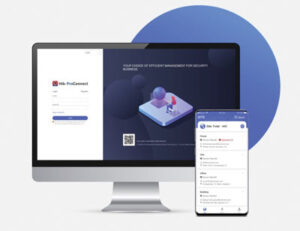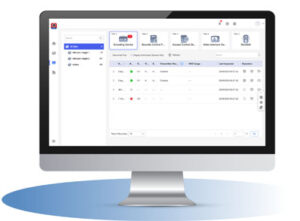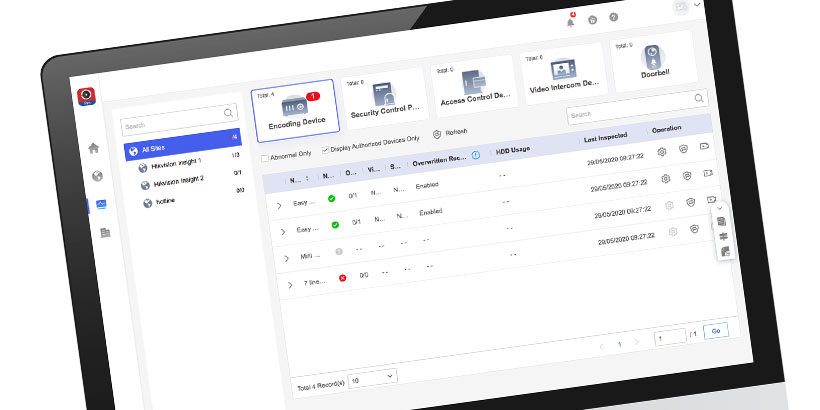For an increasing number of businesses and organisations, cloud-based services play an important role in the management of their premises and processes. Ranging for core business needs, through IT and invoicing, to management of the building itself, the cloud has become a ubiquitous part of the modern commercial and industrial landscape.
One area where the cloud excels is in the creation of unified solutions. The traditional approach to security, safety and building management systems was to effectively ‘silo’ each element. Even in security systems, this often meant the intruder alarm system, access control, video surveillance and perimeter protection would all be separate, despite all contributing to the overall security of a site.
For end users, this was a frustration. In order to add some cohesion to the security offering, a dedicated security manager or system operator would be employed. It was a costly solution to a frustrating problem caused by the limitations of the various technologies. However, as infrastructure advanced and security systems became smarter, integrations allowed some of the headaches to be taken away.
While integration allowed the disparate elements of a security system to work together, there still remained a number of operational bottlenecks. Some of these existed because of different standards between various technologies, while others were caused by sites having a mix of new and legacy systems. Also, technologies such as video surveillance and access control developed at a much faster rate than intruder detection and perimeter protection, meaning that even integrated solutions had fragmented elements.
In recent years, the advanced use of new technologies across businesses and organisations has seen the demand for more efficient solutions increase. As a result, many businesses and organisations expect a unified approach from their security system, and the use of cloud services has allowed this. Even legacy systems can be included through the use of simple and cost-effective codecs and communicators.
 This is not just a case of bringing together all the security systems on one site. While enabling the intruder detection, video surveillance, perimeter protection and access control systems to be managed and operated from a single interface is, in itself, a significant benefit, the cloud-based approach also allows multi-site operations to effectively manage and control their systems regardless of their geographical location.
This is not just a case of bringing together all the security systems on one site. While enabling the intruder detection, video surveillance, perimeter protection and access control systems to be managed and operated from a single interface is, in itself, a significant benefit, the cloud-based approach also allows multi-site operations to effectively manage and control their systems regardless of their geographical location.
Because the cloud can gather data from numerous systems on various sites, it can then amalgamate the information and present it in a way that allows the visualisation of an entire portfolio of solutions, sub-systems and devices. This enables the integrator to manage a full estate of solutions, while also allowing the end user to exercise real-time control over their security investment. One such example of this type of system is Hik-ProConnect from Hikvision.
Hik-ProConnect is a convergent, cloud-based solution that helps manage services for both integrators and end users, allowing access to additional functions through a subscription-based platform. Engineers can quickly and easily monitor the system health status of any connected sites remotely, and can resolve problems before they become an issue for the customer.
 Hik-ProConnect enables integrators to customise security solutions with fully-converged Hikvision devices, including video surveillance, intrusion detection, access control, intercoms and communications, and more.
Hik-ProConnect enables integrators to customise security solutions with fully-converged Hikvision devices, including video surveillance, intrusion detection, access control, intercoms and communications, and more.
Remote maintenance can be carried out, along with proactive status monitoring, to deliver a level of service which enhances the overall efficiency of the customer’s site. The solution is affordable as it is based on a recurring subscription plan. The remote connectivity helps identify and resolve site issues, creating a more efficient workflow and reducing the need for site visits.
Hik-ProConnect allows multiple Hikvision devices to converge and work together as one system. Once unified, integrators can configure versatile device linkage rules tailored to meet customers’ requirements, such as intercom calls and intrusion or access events with video verification. All devices can be managed from a single mobile application.
Instant notifications of device failures, communication losses, hard drive abnormalities or battery status alerts are sent via the Hik-ProConnect portal, mobile app, or by email. Anomaly logs are retained for seven days for easy review.
Remote device parameter configuration is supported, for example enabling the adjustment of video parameters and configuration of VCA rules. The unified web portal supports adding devices in batches and quickly configures devices. The app supports on-site installation of video and alarm devices without the need for a laptop. Customer authorisation can also be granted remotely via the app, optimising the delivery process.
Hik-ProConnect uses Cloud P2P technology for quicker, easier setup without traditional port forwarding.








